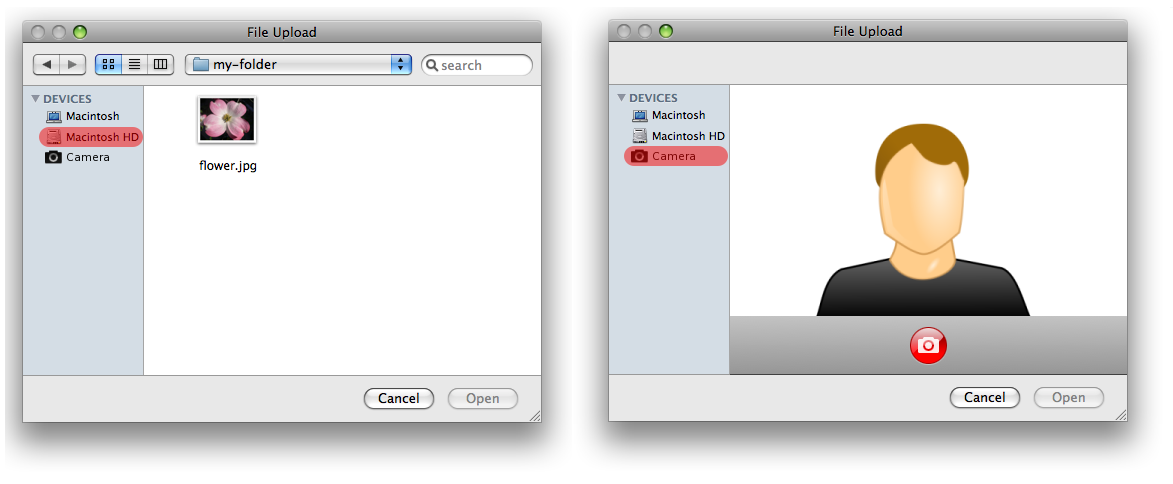Abstract
The HTML Media Capture specification defines an HTML form
extension that facilitates user access to a device's media capture
mechanism, such as a camera, or microphone, from within a file upload
control.
Status of This Document
This section describes the status of this document at the time of its publication.
Other documents may supersede this document. A list of current W3C publications and the
latest revision of this technical report can be found in the W3C technical reports index at
http://www.w3.org/TR/.
The
following changes have been made since the
W3C Candidate Recommendation 09 May 2013
(diff):
-
Since the previous CR publication of this specification the Security
and Privacy considerations section has been revised and made
non-normative, based on testability and implementer feedback. Due to
this change in normative requirements the specification is returning
to Last Call for review of this change.
This document was published by the Device APIs Working Group as a Last Call Working Draft.
This document is intended to become a W3C Recommendation.
If you wish to make comments regarding this document, please send them to
public-device-apis@w3.org
(subscribe,
archives).
The Last Call period ends 24 July 2014.
All comments are welcome.
Publication as a Last Call Working Draft does not imply endorsement by the W3C
Membership. This is a draft document and may be updated, replaced or obsoleted by other
documents at any time. It is inappropriate to cite this document as other than work in
progress.
This is a Last Call Working Draft and thus the Working Group has determined that this
document has satisfied the relevant technical requirements and is sufficiently stable to
advance through the Technical Recommendation process.
This document was produced by a group operating under the
5 February 2004 W3C Patent
Policy.
W3C maintains a public list of any patent
disclosures
made in connection with the deliverables of the group; that page also includes
instructions for disclosing a patent. An individual who has actual knowledge of a patent
which the individual believes contains
Essential
Claim(s) must disclose the information in accordance with
section
6 of the W3C Patent Policy.
5. The capture attribute
This section is normative.
When an input element's type attribute
is in the File Upload state, and its
accept attribute is specified, the rules in this
section apply.
partial interface HTMLInputElement {
attribute boolean capture;
};5.1 Attributes
capture of type boolean, -
The capture attribute is a boolean attribute
that, if specified, indicates that the capture of media directly from
the device's environment using a media capture mechanism is
preferred.
The capture IDL attribute MUST reflect the
respective content attribute of the same name.
When the capture attribute is specified, the
user agent SHOULD invoke a file picker of the specific
capture control type.
If the accept attribute's value is set to a MIME
type that has no associated capture control type, the
user agent MUST act as if there was no
capture attribute.
